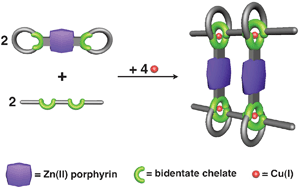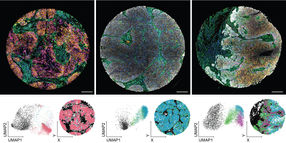An Exceptionally Effective Lead-Detection Protein
Results may inspire new treatments for lead poisoning
Scientists from the U.S. Department of Energy's Brookhaven National Laboratory and the University of Chicago have discovered that a member of a well-known protein family is better at detecting lead than any other known substance. Learning more about the protein's structure and lead-detection mechanism, they say, may lead to new ways to synthesize drugs or to develop treatments for lead poisoning, a worldwide problem that, in the U.S. alone, inflicts irreversible physical damage to half a million children each year.
"This protein can detect very few lead ions in a sea of other metals," said biologist Daniel (Niels) van der Lelie, one of the Brookhaven scientists who participated in the study. "That's an unprecedented, remarkable ability, and we are excited to learn how the protein does it."
In fact, the results, published in the March 31, 2005, online version of Angewandte Chemie International Edition, show that the protein is more than one thousand times more likely to bind to lead than other metals, such as mercury, zinc, or copper.
To determine this, the researchers used a method developed by one of the paper's co-authors, University of Chicago chemist Chuan He. They bind the protein to a short segment of double-stranded DNA that will fluoresce if the DNA strands are separated. With no lead nearby, the two strands of the DNA double helix stay "zipped," and there is no fluorescence. But when a common lead ion, known as lead(II), binds to the protein, the DNA strands "unzip," releasing a burst of ultraviolet light.
The scientists tested the protein's response to the presence of several metals. Most elicited little to no reaction from the protein, producing fluorescence barely above the constant background level. The lead(II) ion, however, induced a large jump in the fluorescence intensity - three times brighter than background.
Van der Lelie, He, and their collaborators plan to further study the structure of the protein, which may reveal why the molecule is so selectively "interested" in lead ions. This information could be used to design lead-poisoning treatment agents that would bind only to lead ions in the body. Current treatments are not so selective, also stripping away beneficial metals, such as iron and zinc, which results in serious side effects. The scientists will also attempt to optimize the DNA-probe method so that the probe emits visible light. This would simplify detection and increase the probe's practicality.
Most read news
Organizations
Other news from the department science

Get the analytics and lab tech industry in your inbox
From now on, don't miss a thing: Our newsletter for analytics and lab technology brings you up to date every Tuesday. The latest industry news, product highlights and innovations - compact and easy to understand in your inbox. Researched by us so you don't have to.

























































